WHY I SWITCHED TO THE WAHOO ELEMNT BOLT

In the battle of Wahoo vs. Garmin, the Wahoo ELEMNT BOLT outperforms the Garmin Edge 530 from my comparative review of what’s most important in choosing a road bike computer. It’s also simpler to both set up and use and it costs slightly less. You can get it here, here, and here for US and Canadian residents and here for those in the rest of the world from stores I recommend because of their competitive pricing and customer satisfaction ratings.
I bought the Wahoo ELEMNT BOLT when it first came out in 2017 to add to my collection of bike computers that help me test power meters side by side. Little did I know then that the Wahoo BOLT would become the one I would choose, replacing my Garmin Edge 520 when I ride with just one bike computer.
Even after the Garmin 530 was introduced, I compared it and found the original Wahoo BOLT still worked better as a road bike computer, was easier to use, and was less expensive. Unless you preferred color maps, were already tied into the Garmin ecosystem, or really wanted one of Garmin’s unique features, I couldn’t see a good argument to put up with the many everyday disadvantages of the Garmin 530 bike computer.
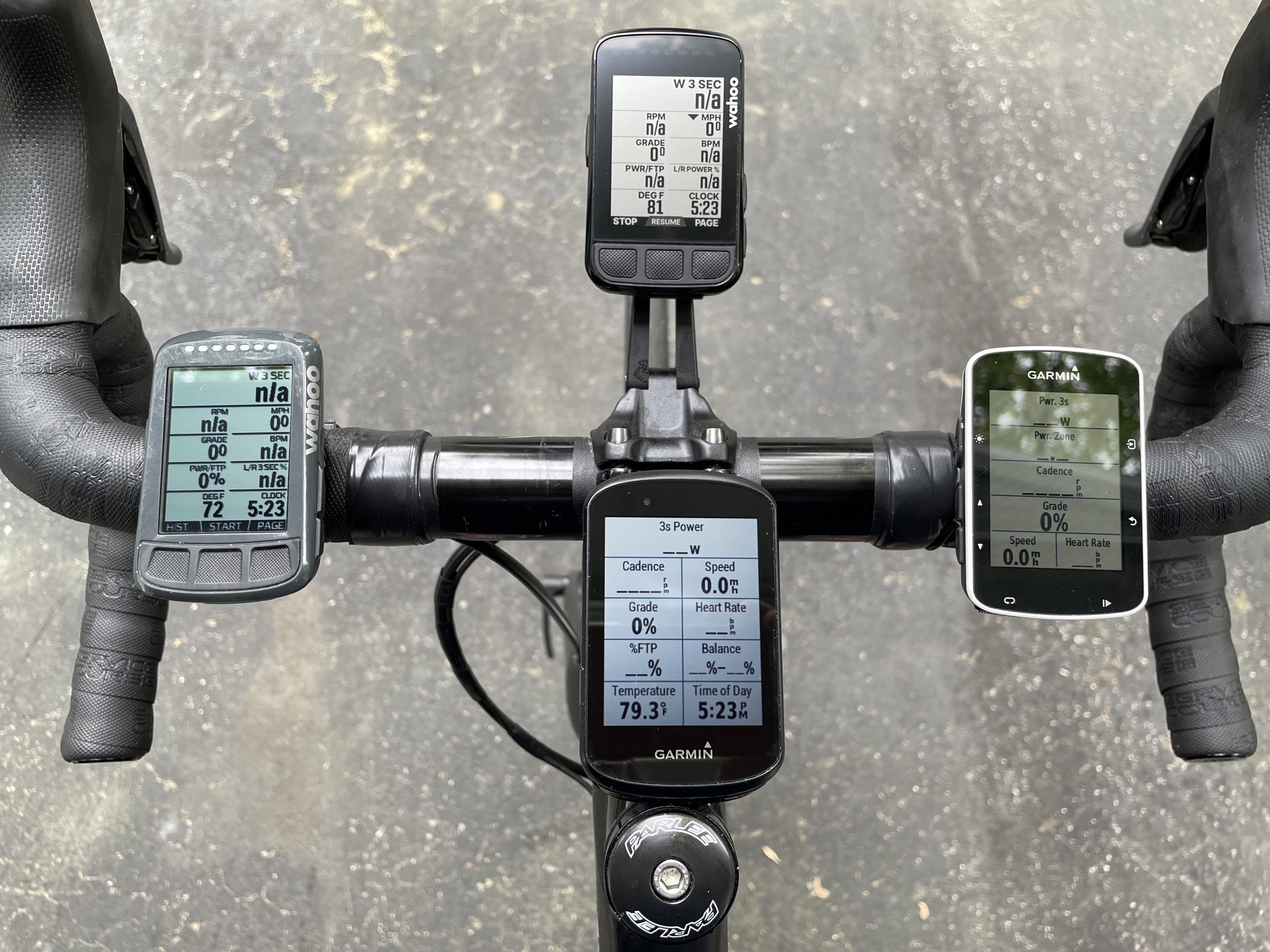
12:00 – Current Wahoo ELEMNT BOLT; 3:00 – Garmin Edge 520; 6:00 – Garmin Edge 530; 9:00 original Wahoo ELEMNT BOLT
Now that the second-generation Wahoo ELEMNT BOLT has come out, this Wahoo vs. Garmin battle weighs even more in Wahoo’s favor. This Wahoo BOLT V2 adds both attractive and useful color and is the equal of Garmin in navigation. The BOLT continues to have a better screen and displays, works more intuitively, is easier to set up, has a simpler interface, a longer battery life, and a lower price than the 530.
If you are buying a bike computer for your road or gravel bike for the first time, the BOLT is the better choice for these and other reasons I’ll detail below. Even if you are a Garmin owner that’s been thinking about upgrading or replacing your bike computer, the latest BOLT is so good that you might want to consider switching over to it if you don’t live by Garmin metrics.
Beyond that, the only reasons I could see for buying a Garmin 530 would be that you are principally a mountain biker or you’re the cycling equivalent of a one-issue-voter, ie., you want a certain feature that only the Garmin has so much that you will put up with all of its disadvantages.
There are other bike computers sold by Wahoo including the Elemnt ROAM, by Garmin like the Edge 830 and Edge 1040, and by others like the Hammerhead Karoo 2 that come with larger displays, touch screens, and offer additional features beyond those on either the Wahoo BOLT or Garmin 530. While it’s smaller than the demand for BOLT and Edge 530 units, there’s a market for all of these devices and reasons to want some of them. But, I don’t see a reason for the regular road and gravel cycling enthusiasts to need more than that what the BOLT does or spend more to get it unless your vision requires a bigger screen, you spend most of your time on your navigation screen, or you want and are willing to pay for all the bells and whistles.
In The Know Cycling is ad-free, subscription-free, and reader-supported. If you want to help keep it rolling without any added cost to you, buy your gear and kit after clicking the store links on the site. When you do, we may earn an affiliate commission that will help me cover the expenses to create and publish our independent, comprehensive and comparative reviews. Thank you, Steve. Learn more.
Among the things I believe matter most in choosing a head unit, here are the ways the Wahoo ELEMNT BOLT and Garmin Edge 530 compare and how the BOLT almost always comes out on top.
SCREEN AND DISPLAY
While the Edge 530 has a slightly larger screen, the Wahoo ELEMNT BOLT’s screen is sharper and brighter than the 530. For a middle-aged, far-sighted fart like me who wears glasses or contacts to read and see computers including those that guide me and my bike for hours each week, I find the BOLT’s screen far easier to read and a difference-maker between the two units.
The Wahoo ELEMNT BOLT’s sharper and brighter screen is notable when the size of the data or maps are the same. But even better, the BOLT gives you ways to display your data that make visualizing what’s on your screen even easier.
As shown in the photo series below, you can change the font size on the data on your BOLT merely by toggling the up/down buttons on the right to decrease or increase the number of fields you have on the screen at any time. While we’re all different, I find displaying more than 4 data fields for more than a few seconds may mean that you aren’t focused and perhaps distracted by things that don’t matter. Too much cognitive load!
To help keep you focused, note that the first number on a data page with 3 to 7 fields is always larger than the others. If you like to focus on one number to guide you as you ride – perhaps your speed or cadence or, in my case, my average 3-second power – this larger top number stands out that much more while the other numbers that matter to you are clear but smaller and below it.
You can change the font size and number of fields on the 530 but you have to set up a different page to do that. With the Wahoo ELEMNT BOLT, you change the number and size of the fields within the page you already have set up with the zoom in/out buttons on the right side of the device.
In both units, you have a limited number of pages. However, with the BOLT, you don’t need to add pages or change between them nearly as often as you do in the 530 to get the same info.
You can also zoom in or out on the BOLT’s map page with the same right-side buttons you use to change the number of fields and font size on the data pages.
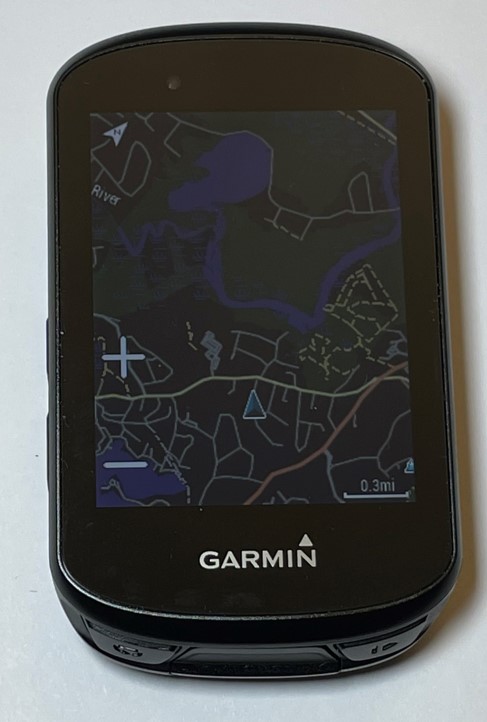 With the 530, you can choose auto-zoom or set a zoom level on a settings page but once underway, you need to go away from the map page, push a half-dozen buttons to change the zoom level, and then come back to the zoomed map screen. Auto-zoom brings you a one-block radius which I don’t find terribly useful. If you want to change the amount of zoom again, you have to go away from the map and start the half-dozen button-pushing steps once again.
With the 530, you can choose auto-zoom or set a zoom level on a settings page but once underway, you need to go away from the map page, push a half-dozen buttons to change the zoom level, and then come back to the zoomed map screen. Auto-zoom brings you a one-block radius which I don’t find terribly useful. If you want to change the amount of zoom again, you have to go away from the map and start the half-dozen button-pushing steps once again.
It’s just an example of how the device-level user interface, let alone the smartphone one, makes the BOLT so much easier to use.
While color on maps is a nice-to-have feature, the latest generation BOLT adds color to your power and heart rate fields. This allows you to see what zone you’re in and how hard you are working (or not) in a dumbed-down way rather than translating your watt and heart rate readings to your zones.
Finally, I find the Wahoo ELEMNT BOLT screen sharp and bright enough that I don’t need to use any backlight riding outside during the day and with the room lights turned on while on a trainer. I used to run my 530 at 80% brightness with a 15-second timeout and often found myself toggling between pages just to turn the backlight on. BOLT’s advantage here obviously saves battery if you do a lot of toggling or you just want to see your screen. It also saves you the need to toggle as often and keeps both hands on the bars when riding outside.
Call me old-fashioned but I’ve never seen much value in the use of color. Yes, it is nice to see the color contrast between different types of roads that Garmin introduced and Wahoo now also provides on the BOLT (and Roam). The second-generation BOLT now adds some functional gains by color-coding your zones.
Bottom line is that the BOLT’s sharper, brighter screen without the need to draw down the battery with backlighting, the way it uses the real estate within a page, and the ease of zooming data pages and maps make the Wahoo ELEMNT BOLT’s advantage here is clear (pun intended)!
SETUP
The Wahoo ELEMNT BOLT takes advantage of the touchscreen on your smartphone to make setting up your pages easy. Using the ELEMNT companion app on your smartphone, you drag and drop the data fields you want to the pages you want. You can put the fields in the order you want by simply dragging them into position.
The first time I did hill repeats with the Wahoo ELEMNT BOLT, I stopped at the top of the first repeat, pulled out my phone, and added and reordered the fields on my lap page based on what I now knew I wanted to see. Took me about a minute. The changes show up immediately on your BOLT screen. (I wish it had taken longer. I needed an excuse to catch my breath.)
You can find, pair your power meter, cadence, heart rate, trainer, etc. sensors and pick your route from the smartphone app as well. You can also do this on the BOLT itself but I find it’s much easier on the phone.
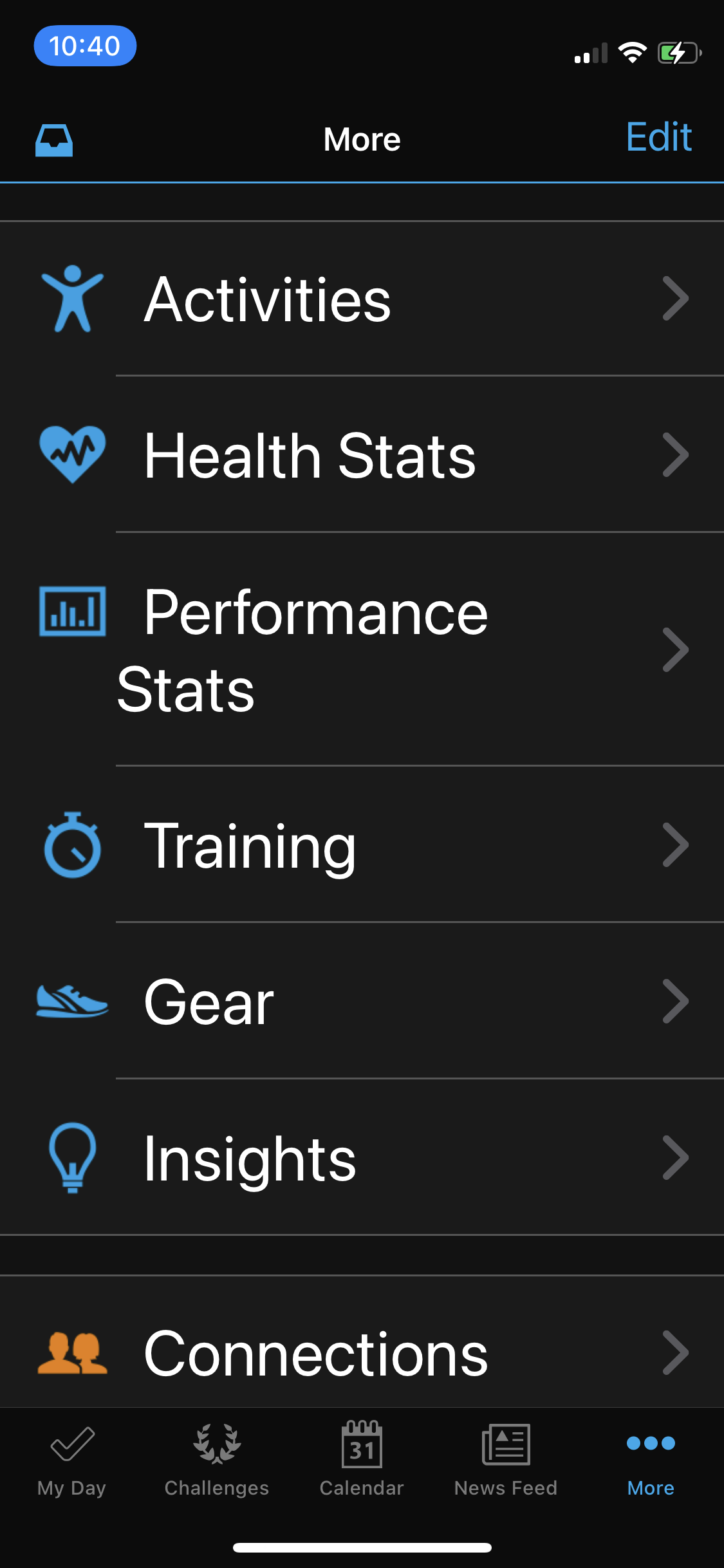
The Garmin Connect app tries to be a cross between Strava and Training Peaks but doesn’t help you set up or use your Edge 530
The Garmin Connect smartphone app doesn’t help you do any of this – set up fields on pages, pair sensors, or pick routes on your Edge 530. You do all of those things on the device. Instead, the app tries (and in my view fails) to be a cross between Strava and Training Peaks but
Setting things up the 530 unit itself isn’t hard, but it’s a rather tedious series of button pushes back and forth and it’s not intuitive.
In the touch screen phone world we live in, Wahoo ELEMNT BOLT is hip and the 530 is old school or the BOLT is dope and the 530 is whack or whatever words hipper enthusiasts than me actually use.
Note that you don’t need to ride with it to make the BOLT work.
I haven’t done a side-by-side comparison but both the BOLT and 530 have tons of fields to choose from. There weren’t any fields I wanted that I couldn’t find on either
In Garmin’s favor, the 530 triggers a reminder on your screen to zero-offset your power meter when you wake that sensor up.
With the Wahoo ELEMNT BOLT, you don’t get a reminder. You have to open the menu (push the on-off button once), highlight the power meter in your sensor list (scroll to it with the down button) and push the calibrate button (left button on the front of your screen.)
Even though some of the newer power meters claim their technology doesn’t make it necessary, power meters are still finicky enough that I recommend you zero-offset yours once your bike is at the outside temperature at the beginning of each ride. It takes 15 seconds and will help ensure training data consistency from ride to ride.
OPERATION
The buttons on the Wahoo ELEMNT BOLT make a lot more sense and I find are far more intuitive than on the 530.
The on/off button on both bike computers is on the upper left. That makes sense as that location is the least natural spot to put a button for the right-hand-dominated world on a ride (sorry lefties). You’ll use it before you set off on your ride and then won’t have a need to reach for it again unless you want to change settings mid-ride, which I don’t suggest you do while rolling.
The Edge 530 takes about 15 seconds to go from being totally powered off to your first data page. It also has a sleep mode that it re-awakens from instantaneously. The Wahoo BOLT takes a stupidly long 45 seconds to start up and has no sleep mode. If inactive or you forget to turn either bike computer off, both will shut down automatically after a period of time you can set.
Switching between pages, something you’ll do frequently during a ride is a very different experience on the two units. With the BOLT, you merely press the right button on the face with a finger of the device to go to the next page. If you want to go 2 pages ahead, press the button twice. Simple. The button is slightly raised and is easy to depress.
To change the page on a 530, you press either a raised forward or back button that sit together on the lower left edge of the device. If you are a righty, you have to reach over the 530 and use your thumb to toggle these buttons.
Because my thumb is fatter, shorter, and less agile than my fingers and because the two buttons on the 530 are so close together, I find it easier to use a finger from my left hand to toggle these. Of course, if you’re a lefty, using a finger from your dominant hand is an obvious first choice.
But, either way, using your left hand to make these page changes moves it away from the area of your left brake lever. That’s the one that controls your front brake on bikes in most of the world and the one you should use first when slowing your road bike.
Further, you are taking your hand away from the area of that lever AND probably looking at your head unit to see the results of the page change you’ve made. This is truly a bad combination when you should be looking at the road and all that is going on with the riders around, you ready to brake when necessary.
On the right edge of these bike computers, you also have different layouts. Similar to the left edge lower buttons on the 530, the right edge lower ones on the BOLT are essentially opposing buttons though larger and spaced further apart. While the 530 buttons on the left edge switch between pages, the BOLT’s right edge buttons zoom in and out data font size by reducing or increasing the number of fields on a page and zoom the map in or out.
The 530’s right edge buttons move you back and forth between menu options and confirm the option you want. Helpful, useful but seemingly a waste of a key edge for right-handed cyclists unless you are doing a lot of menu changes mid-ride, something I’d expect most don’t.
And then there are the buttons you’ll use the most during a ride. These are the ones that start/pause/resume/end a ride, start a new lap, change the page you are on (BOLT only), and confirm certain actions (BOLT only).
There are three of them only the Wahoo ELEMNT BOLT, each slightly raised above the face of the bike computer and easily clicked with a forefinger. They also have labels just above them that tell you what they do for the screen you are on.
I find this far superior to the two 530 buttons on either side of the edge at the bottom of the Garmin bike computer. These perform the critical start/pause/resume and lap actions and leave others like changing pages or menus to the right and left edges as I described earlier.
For me, I can never quite figure out whether it’s best to use my thumb or a finger to push these Garmin buttons. With some out-front mounts or if you put the unit on your stem rather than in an out-front, there’s often not a lot of room for your thumb to get to them and a longer finger may require you to flip your hand palm side up to get a good angle.
Ergonomically and logically, operating the BOLT is a superior experience. It’s almost as if Wahoo studied what worked and didn’t about the Garmin units before designing their own to improve on the things that were harder to do or made less sense.
Unfortunately for Garmin, after years of making and getting users accustomed to several generations of Edge family menus, logic, and button locations, it would be quite disruptive to make the kind of fundamental changes that Wahoo and more recently, Hammerhead has made to the basic operation of bike computers.
NAVIGATION
Comparing the navigation abilities of the Wahoo ELEMNT BOLT and Garmin Edge 530, I considered several key performance categories which I’ll discuss separately below.
Maps and Uploading
I ride a lot of regular routes I know where I don’t need or use the GPS navigation feature. When I head out on a new group ride or do an event, however, I do use navigation because it’s often a route I haven’t ridden before or for a while. I like the confidence of knowing where I need to make the next turn especially if (when?) I fall off the back or it’s time to take my turn pulling. My sense of direction has also atrophied since I began using a car GPS years ago and was never very good in the first place.
The Garmin Edge 530 has a robust set of road maps that the 520 didn’t. The 520 Plus did have a much better map set but used the same processor as the 520 and navigated way too slowly. You could miss a turn or get notified after the turn waiting for the Plus to navigate your map.
Garmin fixed that with the faster processor that came with the 530 that keeps it navigating without delay. Further, the 530 also added trail and mountain bike maps to support your diversions from road cycling. This was a welcome addition for those of us roadies venturing into gravel riding.
Wahoo’s latest ELEMNT BOLT meets the Edge 530’s map range and speed challenge. It comes pre-loaded with detailed road and off-road maps from around the world and has plenty of room to upload the routes I’ve saved in cloud apps.
While I do ride gravel, comparing the range of MTB maps available on the BOLT and 530 is outside my scope. (This is a review site for road cycling enthusiasts after all.) Garmin has the Trailforks map set pre-loaded on the bike computer. Trailforks claims something like 370,000 mountain bike trails and ratings in 123 countries.
For their part, the BOLT claims to be able to navigate any route that is on a map. Which map sets, I don’t know. They do upload OpenStreeMaps, the user-generated map source on the BOLT and you can update that free source regularly or whenever you go to a new area.
As with the Wahoo ROAM, the BOLT also can download Trailforks, MTB Project, and Singletracks routes in the same way it does those from Strava or RideWithGPS. Most of those services are free or come with a monthly fee if you want the premium plan.
Not that I’ve found I needed it with the 4x storage increase from the original to the current BOLT (now equivalent to the 530’s storage at around 16GB), you can also remove stored or pre-loaded maps (and add them back later) from regions of the world and nearby countries or states where you don’t normally ride.
With the 530, Garmin caught up with some of the innovative, important, and truly differentiating functionality of the original BOLT.
Most notably, with the 530 you can upload routes from Ride With GPS, Strava, and other route mapping apps over WiFi. With the 520, you had to plug the device into your Mac or Windows computer with a Garmin-specific USB to micro-USB cord and upload your route file to the right folders.
Except for what maps might chart the roads and trails near where you live, I find the maps and uploading process quite good on both the BOLT and 530 now.
Finding and Starting a Route
To find and then start a route on the 530, you need to push buttons on either edge of the unit through four menus (Menu>Select Activity Profile/Road>Navigation>Find a Course Option) including some up-down scrolling to get to your course.
With the Wahoo ELEMNT BOLT, you hit the page button at the bottom of the screen until the map page comes up (usually one push from the workout page the BOLT initially powers to). Then you push the route button also at the bottom of the screen on that page and scroll down and enter your route. Intuitive. Done. Worry about other things.
The 530 puts your routes in alphanumeric and alphabetical order. BOLT gives you the option to sort your routes the same way as the 530 but also by route length, proximity to your current location, and date that you added it.
I find the date listing really handy. If, for example, you are doing Wicked Right for the first time (shame) and just loaded it from Ride with GPS, the route will be at the top of your BOLT list. On the 530, if you’ve got 50 or more routes saved to your device as I do, you might need to scroll through a long list of routes to get to the one you want to ride.
Once I’ve picked a route, the ride comes up equally fast on both the BOLT and 530. Some may say one is faster or slower than the other. I guess that it’s more a function of the signal and route density in the area where you’re using your bike computer rather than the speed of its processor.
Because it takes less effort to get to the route selection page and actually picking the route is easier on the BOLT, I give it the advantage for this category.
Navigation Display
While both the BOLT and 530 have color screens that I find sufficiently good for navigation. BOLT shows main roads in darker colors and widths than less traveled roads. The 530 puts the road names on their maps. I don’t see these more as preferences than differences which make one or the other bike computer better or easier.
If you have chosen a route to ride, they go about the task of displaying that route in slightly different ways.
Garmin uses bright pink color to show the route you’ve selected, a white arrow pointing from and to your next turn along with the distance to that turn and the name of the street you are turning on.
Wahoo uses a series of bold black chevrons for your route, wraps those chevrons for each turn, and also shows the distance to the turn and name of the street you should turn on.
I find the cascade of chevrons more distinctive than the shocking pink though I do fine with each.
What I do find different and helpful is that you can put any two data fields at the top of your navigation screen on the BOLT. This allows me to keep on top of the data I use to guide my training – power and cadence – while still having the route up.
As I showed in the array of BOLT map photos in the Screen and Display section above, you can use the up/down buttons on the Wahoo ELEMNT BOLT to zoom in and zoom out the map to get a higher level or more granular view of where you are in relationship to the roads around you and your upcoming turn. I find this feature in combination with the cascading arrows especially helpful when trying to decide which turn to take at more complicated intersections where you might have two or three roads leading in and out of it.
If you have a data page up on the 530 with your regular array of performance fields and come to a turn, the turn notification street name and arrow will overlay the data fields on the bottom third or so of the screen. So, for example, if you have gradient and speed as the bottom two fields of the six on your screen, you won’t be able to see that for the quarter-mile or so from when the notification turns on until it goes off after exiting the turn.
The BOLT merely adds the turn notification to the bottom as if it was two additional fields while shifting the other performance fields up the screen and keeping them fully visible. This is like going from 5 to 7 fields. The 5 fields you were looking at before shift up and get a bit smaller and the turn information shows up at the bottom. Once you exit the turn, the performance fields shift down again.
Likewise, when you get a phone or text notification, the field shifting versus field covering works the same way on the BOLT versus the 530.
Seems like a small thing but I always hated the way the 520 (and now the 530) covered up a couple of my fields and immediately noticed and smiled with satisfaction when I realized they were still there on the BOLT.
With both bike computers now having a color screen, the small things that the BOLT does – the chevrons, being able to have two data fields at the top of the nav screen, and not covering any of the fields when you have a data page up and a turn notification comes in – puts the navigation display comparison in the BOLT win column in my view.
Routing
Both the 530 and BOLT provide turn-by-turn notifications that perform equivalently. Some will say one is quicker than the other in notifying, etc. Riding with the two of them, I’ve found occasionally one will notify sooner than another but it’s never consistently one versus the other. The difference in time between notifications is a few seconds at most and usually always with enough time to execute the turn in an unhurried way.
The latest BOLT can now reroute you to get you back on course. This is something the 520 and 530 always did. and route you back on course the way the 530 does.
Depending on how you have it set up, you can also get audio beeps or red flashing LEDs to alert you when you go off course with the BOLT. Assuming you’re not on your navigation page already, this would prompt you to switch to it to see the map of turns to take to get you back on course.
You can also have the row of LEDs on the top of the BOLT signal you right or left as you close in on your turn. Note that the LEDs are less effective on a sunny day.
Both units can re-route you back to the start by retracing your ride on the route you took.
If you are out riding with your phone (and who doesn’t these days), you can also plug an address into the ELEMNT companion app and have a route automatically created and synced to your BOLT. Wahoo calls this “take me to…” Unfortunately, you can’t use your smartphone to enter an address on the Garmin Connect app to get you to your 530.
You can also create a map on either the BOLT or 530 devices by entering the address or toggling to find a place on the map though it’s a bit more cumbersome that way.
Wahoo also added a couple of new routing features to the BOLT previously available on its more expensive ROAM bike computer. With either the “take me to…” or “route to start” routing options, the BOLT can create the most efficient route on the surface you want to ride. You can choose Road, MTB, Cross, or Hybrid (hello gravel!).
Now that BOLT has caught up to Garmin on rerouting and with their ability to do a few more things and do them on your smartphone, I’d give the edge here again to the BOLT.
Find what you're looking for at In The Know Cycling's Know's Shop
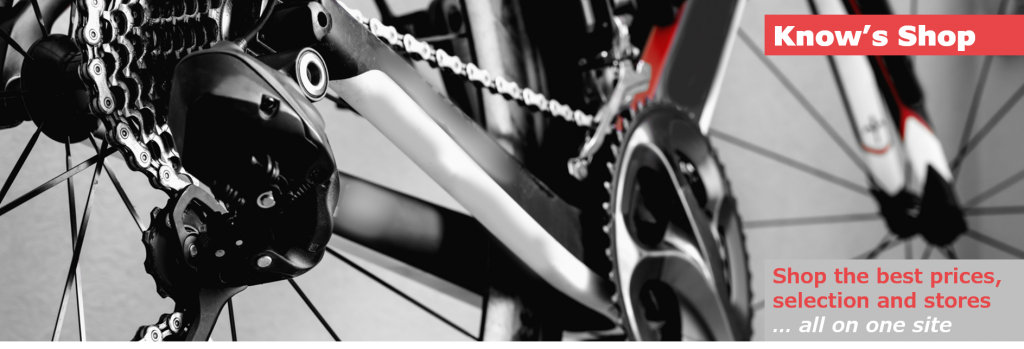
- Compare prices on in-stock cycling gear at 15 of my top-ranked stores
- Choose from over 75,000 bikes, wheels, components, clothing, electronics, and other kit
- Save money and time while supporting the site when you buy at a store after clicking on a link
COMMUNICATION
The BOLT does a superior job of communicating with and controlling your trainer. (Makes sense. Wahoo also makes trainers.) It avoids the need to use 3rd party software to run between the head unit and trainer to control the resistance. If that is important to you, there’s another check for the BOLT.
Both the BOLT and 530 will upload your results to Strava, TrainingPeaks, Today’s Plan, and your other apps that capture and analyze your results. While the 520 required that you plug in the device to your computer using a Garmin-specific micro USB to USB cord, the 530 will now do this over WIFI. The BOLT has always had this capability.
I don’t know about you, but I want to know my results as soon as I push the ride-over button and before I pull out my phone in a WiFi zone and get to those apps.
Here, the Wahoo ELEMNT BOLT excels. The completeness, organization, and presentation of the data are so much better on the BOLT than the 530. It’s also better than the results displays you can get on your Strava and TrainingPeaks phone apps.
Here are a couple of comparisons of the presentation of results (from different rides and with the original BOLT) including a couple to the far right with Zone details that are only available with the BOLT
BATTERY
While both claim a battery life longer than I know I’ll never ride in one day (Garmin Edge 530 – 20 hours, Wahoo ELEMNT BOLT – 15 hours), those numbers are way misleading.
On a long ride, navigation required use mode, I’ve found (as have many I’ve been on those long rides with) that the Wahoo ELEMNT BOLT battery lasts longer than the Garmin Edge 530.
What’s “long ride, navigation required” use? For me, it’s GPS navigation and three ANT+ sensors or devices connected (power meter, heart rate monitor, iPhone). With the 530, I also have the screen backlit at 80% to give me as close to the same screen visibility as the BOLT provides with no backlight. I also set the 530 display to a 15-second timeout and to avoid draining its battery prematurely.
If you want to get text or phone notifications or some of the other features like Live Strava Segments on your 530, you also need to have Garmin Connect turned on which further drains the battery of the Edge (and your phone). The notification is merely a setting in your BOLT that connects to your phone so you don’t need an extra app open on your phone and communicating to your Wahoo.
Using these bike computers side by side in the use case I’ve described above, the BOLT lasts about 10 hours and the 530 about 6.5 hours. Other reviewers have noted as much as a 2X to 3X longer battery life for the BOLT over the 530. Some report more or less the same life.
I’ve not seen anyone report the 530 lasts longer than the BOLT. Depending on how you use it, for example, with some combination of the GPS or Garmin Connect turned off and backlight set to a lower level, I could envision them lasting about the same.
Garmin touts the 530’s “battery saver mode” which they claim doubles the battery life but turns off the screen. Seems like having the display turned off is a rather extreme mode. They also sell an auxiliary battery that snaps into the bottom of a Garmin out-front mount if you really want to extend the 530’s life. It sells for another $130. Uh, no thank you.
In most of my riding, battery life isn’t an issue. Half of my rides are on routes I know so I don’t need to turn the navigation. I also have developed a habit of plugging in my lights and head unit every Sunday (and my Di2 the first Sunday of every month). They usually have enough charge to last through a regular week of 6-10 hours of riding with the limited amount of navigation I use.
I do a half-dozen 100-mile, 6-hour, or longer rides each year where I use the GPS to help me navigate the course as it is usually one I don’t know. \When I used to run the Edge 520, I learned to turn the display brightness down. To conserve battery, I’ll also shut off the navigation when I didn’t need it or traded turns with other Garmin users so we all weren’t navigating and draining our batteries at the same time.
On those “long ride, navigation required” use situations, the 530 battery starts running low in the last third of the ride and gets me wondering whether it’s going to die before my legs and lungs do as we ride together toward the finish.
I don’t need that added mental stress. With the BOLT, I can focus on the ride.
And speaking of stress reduction, the latest BOLT also uses a USB-C connector to recharge the device. These make a more secure connection and charge faster than the micro USB used by the original BOLT and the 530.
FEATURES
On this topic, I’ll admit defeat before even starting the battle.
Not the defeat of one of these bike computers vs. the other, but defeat with some of you dear readers who really love one feature so much that it drives you to buy a bike computer that unique offers it (likely Garmin) wiping out serious consideration of any of the other pros and cons of the unit that might be equally or more important to your riding performance and experience.
You will tell me so in the comments section below, as have so many readers that have gone before you. Uncle!
But, In the ways I and I would dare say most enthusiasts use bike computers, the BOLT and 530 have almost all of the features you need, most that you want but don’t need, and some you neither need nor want. And I’ve tried to describe and compare the BOLT and 530 on this above.
That said, the 530 clearly has more features including some that you never thought about but now may want or feel you need.
Rather than do a comprehensive feature comparison here, I’ll quickly tick off some that go beyond what I’ve written about in the sections above. Since we’re now on the second-generation Wahoo ELEMNT BOLT and moved through the Garmin Edge 520, 520 Plus, and now the 530, it’s easy not to have been able to keep up with all the features you now have available to you. So I’ll try to help you (and me) catch up.
Then, of course, it’s up to you to judge whether each feature is a need-to-have, nice-to-have, or won’t-use-it-even-if-I-have-it and how that affects your decision.
Features that both the Wahoo ELEMNT BOLT and Garmin Edge 530 can do:
- Structured workouts
- Varia radar
- Strava Live segments
- Live tracking – share your location with other riders and interested family and friends. (When’s he coming home to look after the kids?)
Features that only the Garmin Edge 530 can do:
- ClimbPro – BOLT shows you an elevation profile of the route ahead but it’s nowhere near as comprehensive as the distance, grade, and other metrics the 530 displays for a climb
- Accident notification
- Hydration and nutrition tracking and alerts
- Weather alerts
- Bike alarm
- Find my Edge
- Contacts
- Calendar
- Fitness metrics – V02 max, HRV, heat and altitude acclimation metrics, and others that appear to compete with commonly used Training Peaks metrics such as FTP, TSS, IF, etc.
- MTB metrics – Grit, flow, jump height, and other unique-to-Garmin metrics. Looks cool but I’m not a MTBer.
Many of these are features or metrics available from Garmin you use on a ride. Personally, I prefer to enjoy my ride and focus on just a few key metrics (e.g. power, cadence, speed, gradient) and my advanced planning around weather, hydration, nutrition, etc. to guide my effort.
I’m not the kind of rider that chases Strava segment PRs or KOMs or wants to have alerts and messages coming at me from anyone beyond my wife throughout my ride. (And she doesn’t bother me unless it’s an emergency.)
If you are, you may find some of the features on the 530 attractive nice-to-haves. I don’t think any are need-to-haves, game-changers, or decision-makers nor do I think they would be for most road cycling enthusiasts.
OK, maybe the Climb Pro. But, I’ve lived with it till now and probably won’t climb any better with it.
On features, Garmin is the winner certainly on the sheer range of them if not always the value.
PRICE
In the US, the Wahoo ELEMNT BOLT sells for $280 and the 530 for $20 more at $300. In the UK and EU, the Edge 530 sells for £260/€305 and the BOLT is also slightly less at £250/€295.
Both of these devices are “geo-restricted” meaning you can only buy them from stores in the country or region where you live or have them shipped to.
You can find and order the BOLT using these links to recommended stores Competitive Cyclist, Planet Cyclery, REI, and Tredz (10% off with exclusive code ITKTDZ10).
If you prefer the Edge 530, you can find and order it at these links to Competitive Cyclist, Power Meter City, Merlin, and Tredz.
It would be easy, as many have to analogize the Wahoo vs. Garmin choice with Apple’s MAC OS vs. Microsoft’s Windows or Apple’s smartphone iOS vs. Google’s Android. In each of these examples, the former is easier to use but has a smaller eco-system and is more expensive while the latter has a bigger, open more inclusive ecosystem and more features but often more bugs.
But that comparison is simplistic and has some major flaws. The Wahoo BOLT is slightly less expensive than the Garmin 530 and I haven’t found Garmin’s eco-system or extra features to add a great deal of value to the 530.
* * * * *
Thank you for reading. Please let me know what you think of anything I’ve written or ask any questions you might have in the comment section below.
If you’ve benefited from reading this review and want to keep new ones coming, buy your gear and kit after clicking the store links in this review and others across the site. When you do, we may earn an affiliate commission that will help me cover the expenses to create and publish more ad-free, subscription-free, and reader-supported reviews that are independent, comprehensive, and comparative.
If you prefer to buy at other stores, you can still support the site by contributing here or by buying anything through these links to eBay and Amazon.
You can use the popup form or the one at the bottom of the sidebar to get notified when new posts come out. To see what gear and kit we’re testing or have just reviewed, follow us by clicking on the icons below.
Thanks, and enjoy your rides safely! Cheers, Steve
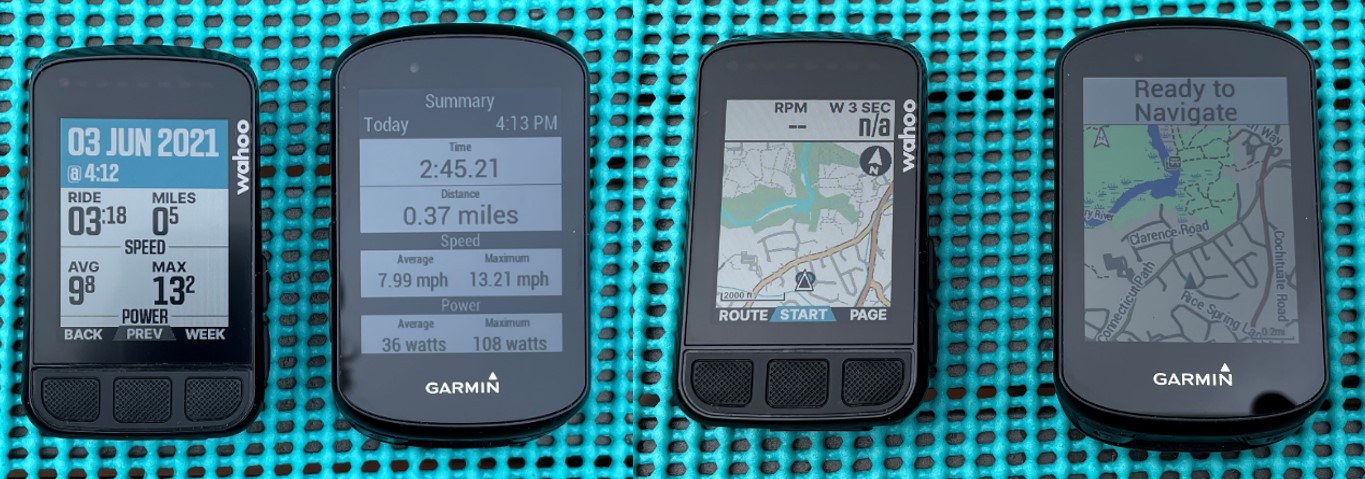

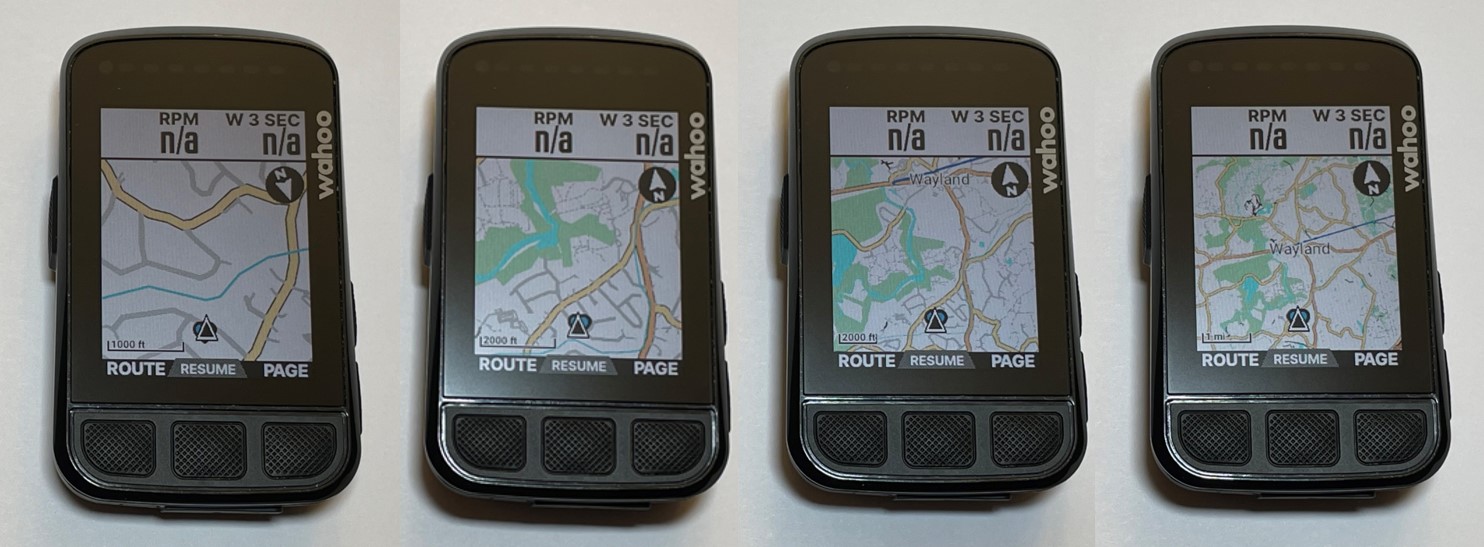
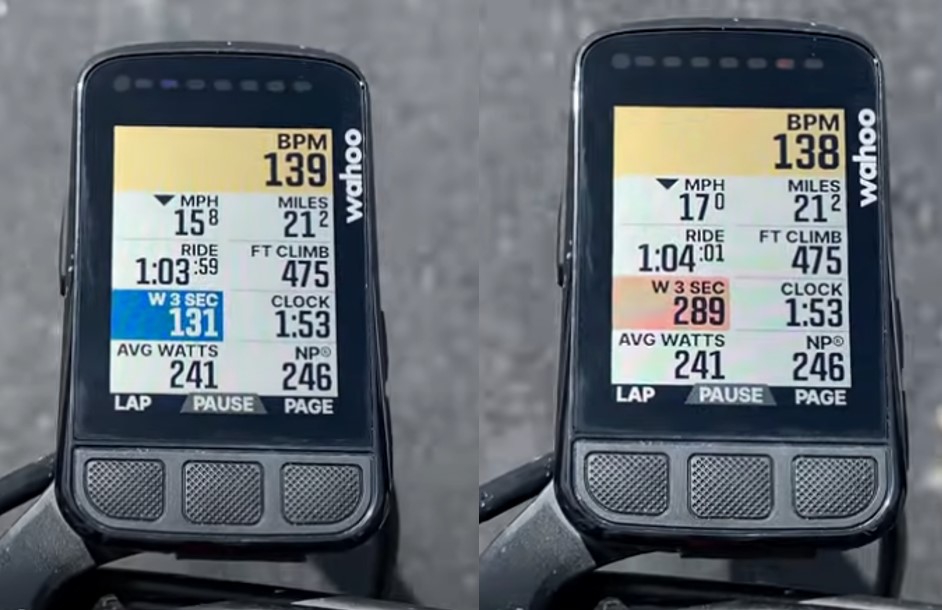
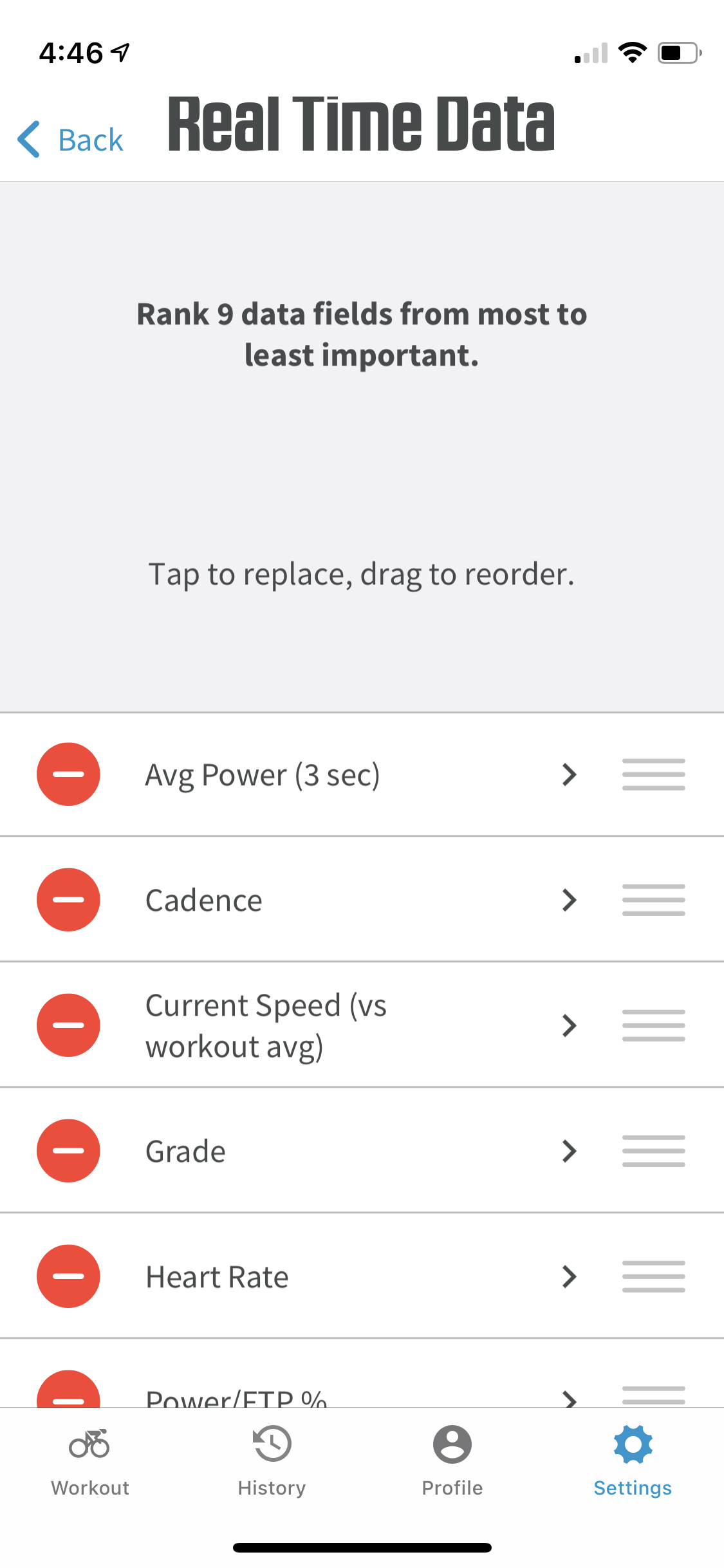
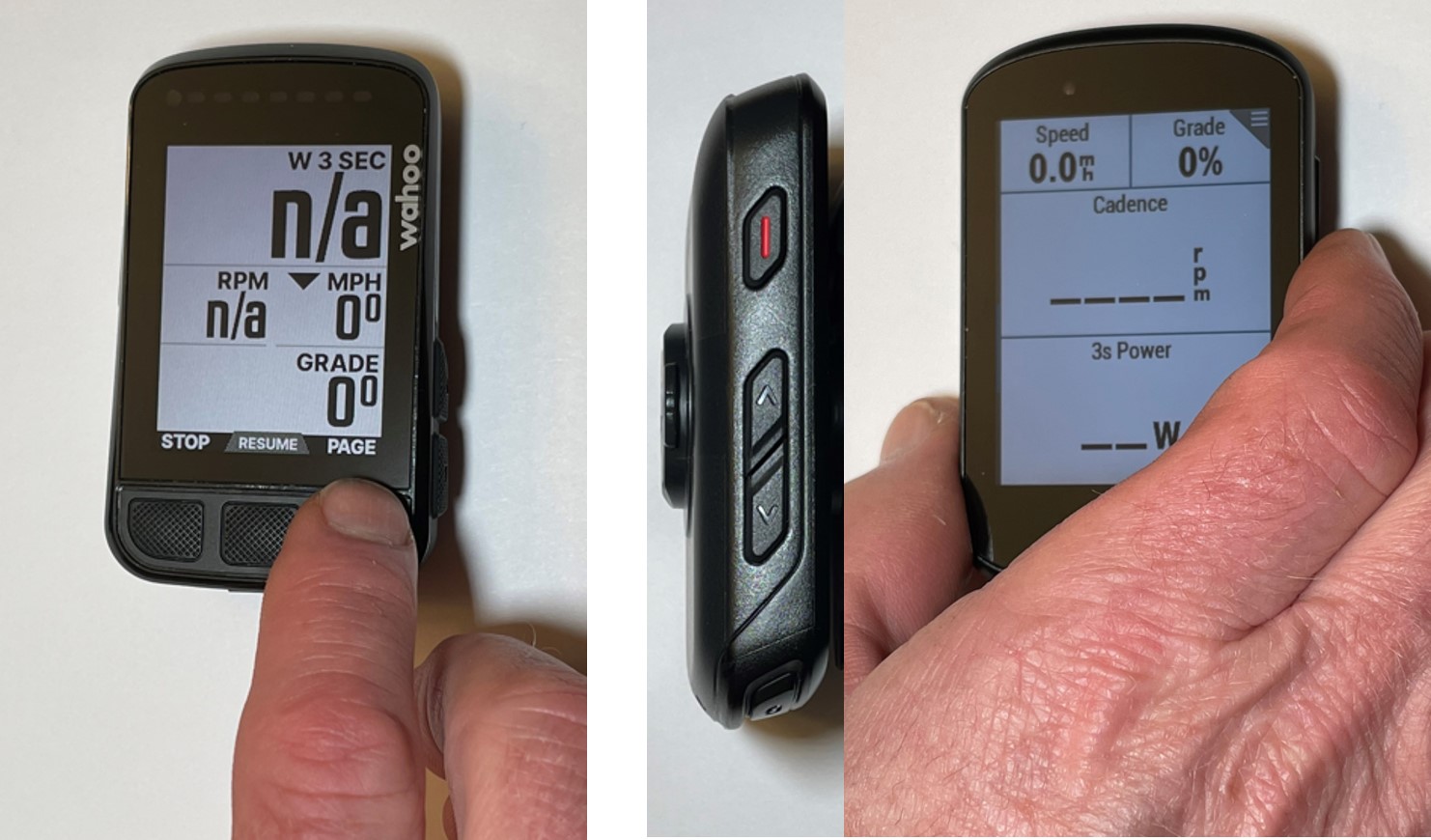
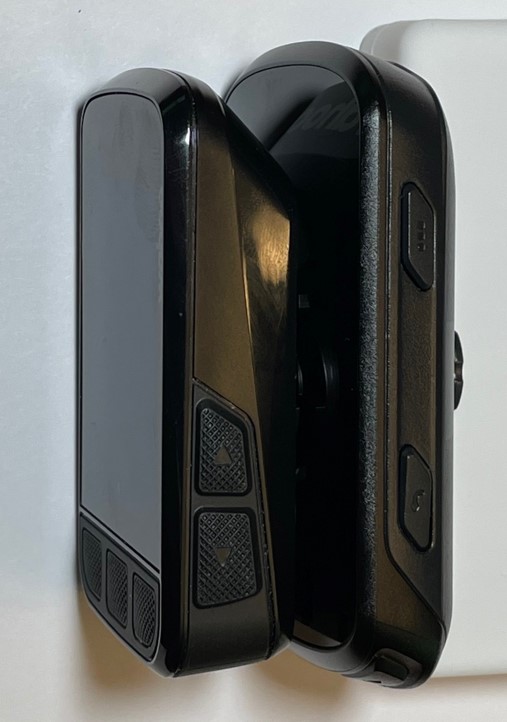
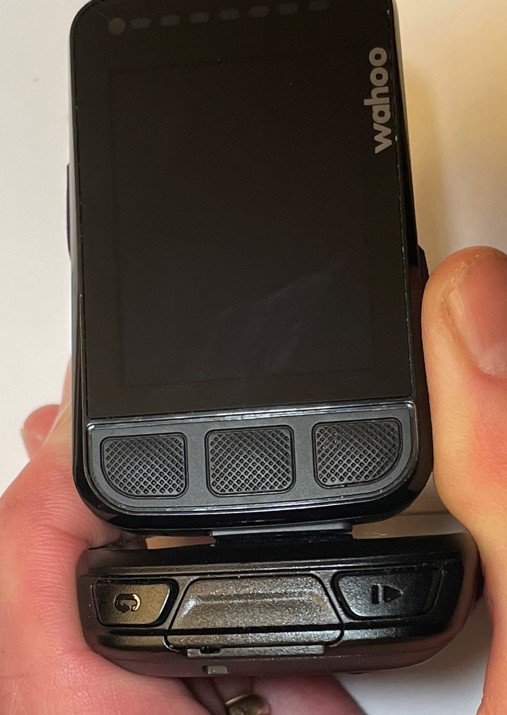
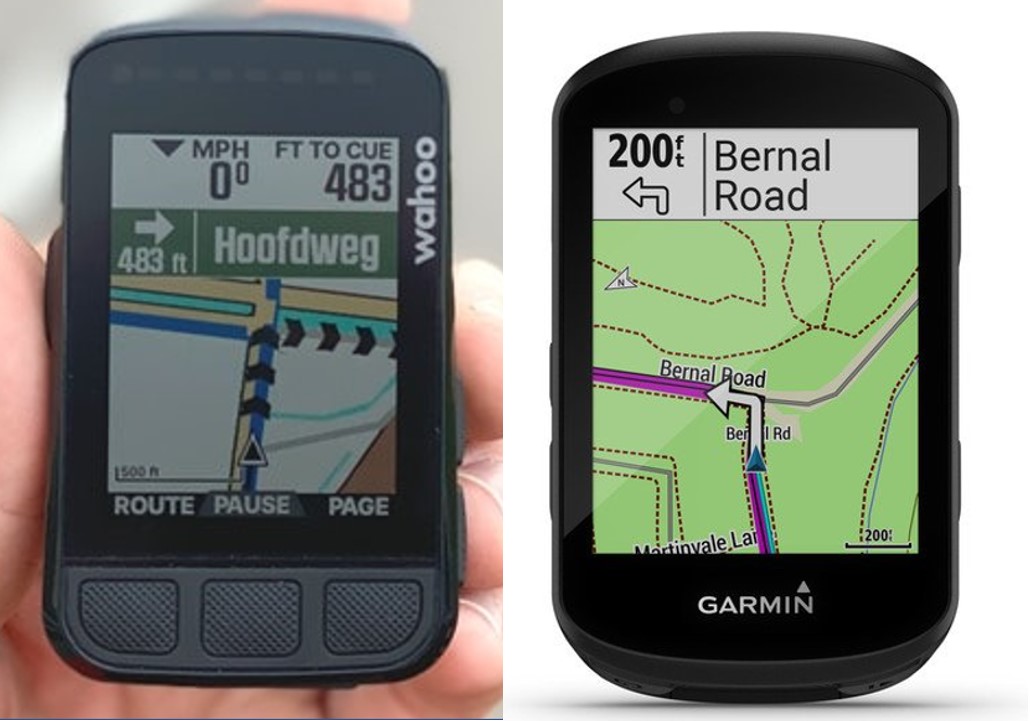

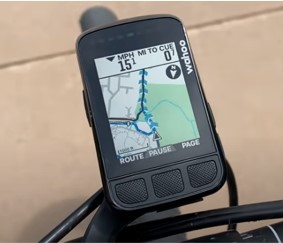
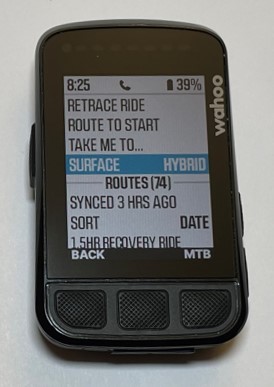


Thanks for another great (and detailed) write up. Will the Bolt pick up the (individual) Garmin speed and cadence sensors?
Dave, Yes, as long as your sensors are ANT+ or Bluetooth, the BOLT will communicate with them. The speed and cadence sensors that Garmin sells for about $70, part number 010-12104-00, are ANT+. ANT+ is a proprietary but open network protocol that is the dominant one for sensors in bike world. Garmin bought the protocol but it’s in their interest to make it available to everyone as they have. Steve
Interesting, but is it better than the Garmin 1000?
Tim, Depends what you value. The 1000 has a screen the size of a smartphone that operates pretty much the same as a the 520 and 820. If you want something that size on the front of your bike and are willing to pay nearly 2x the price of a BOLT or 520 for it, perhaps. I’m not a fan as you can read my take on the Garmin 1000 here. Steve
Tim, you’ll need to be the judge if real navigation and larger display of 1000 are worth it. I do a lot of riding on unfamiliar roads in the Sierras and California Coastal mountains, outside of cellular coverage, and therefore I find the Edge 1000 attractive. Would probably buy the 1000 if shopping today, but sticking with my 520 for now, hey, its paid for and works fine even if I have to load routes using a computer (boo!).
I’ve had the 520 for 1+ years now, and recently played with the Bolt, the mapping & turn-by-turn directions are similar while out riding. The primary difference is that its far easier to load routes onto the Bolt. Both rely on RideWithGPS to create the turn-by-turn instructions, and will not re-route if you get off course. Both have small screens that can be hard to see with my single vision Rx sunglasses, both have somewhat crude maps, and that can make it easy to miss a turn – lets just say I have a lot of ‘bonus’ miles LOL. I’m not saying the 1000 will prevent you from missing turns, but on the 1000 its far easier to see the map and the big picture. Would definitely help if I upgraded riding glasses to progressive lenses, luckily I still have good close vision so pulling my sunglasses off allows me to read any screen on 520 or Bolt.
The 1000 has true navigation, like in a car, so you can enter an address or point-of-interest without a cellular connection and it will create route. The lack of structured workouts on Bolt would be a deal killer for me, I even take my 520 to the gym for doing structured workouts on the Stages stationary bikes with power meters. I understand from DCRainmaker review the Bolt is scheduled for workout feature in future upgrade. Yay!
Rather than upgrade to the 1000, or swap out to Bolt (love those buttons!), I continue to use the 520 and then run RWGPS app on my iPhone and put it into Airplane mode. While at home I download and save the route into RWGPS app, for offline use while in airplane mode or otherwise outside cell coverage. Then from time to time (photo opp!), or if I miss a turn, I reach into back jersey pocket and pull out my phone to review the route. I did a 14 hour ride last summer and my iPhone 5s battery ended at ~80%. Similar for my double century this year, outside for 16 hours and iPhone 7 ended at ~50% – there was more cell coverage so I didn’t use airplane mode as much so that my wife could see me on Find My Friends 🙂
Wahoo has just announced that structured workouts you have created on Training Peaks and Today’s Plan can now be loaded into both the BOLT .
I agree with your review Steve, and would only add that I was incredibly impressed with the Bolt’s ability to work with many different sensors. In my own case, after purchasing a power meter based on your reviews, I initially tried to ride using my iPhone 7+ as a head unit. The problem is that using the phone for navigation while picking up data from a power meter was awkward–two different apps were needed, and only one could be visible on the screen. And when I used Strava to display the power meter data, I couldn’t get Live Segments to work. Furthermore Strava doesn’t pick up cadence from Powertap pedal-based power meters (which is what I us—so I can swap them to a spin bike come winter), so I ended up trying to use Powertap’s app. That app works great for reading data from the power meter, but is lacking in other respects, such as navigation and Strava live segments. So I finally gave up and bought the Bolt and was amazed at how easy and intuitive it is to use, how it pairs with sensors with no fuss, and how many great features it has. Using Powertap pedals, it even lets you easily set the crank length–which I’ve had trouble with even using Powertap’s own app. The Bolt is really well engineered–and the software might even get better.
Jonathan, Thanks for your comment. As you pointed, an iPhone really isn’t ideal as a fully capable cycling computer head unit. Ones designed for cycling like the Bolt, Garmins and a couple others are the way to go and Bolt is the leading one I’ve used. Steve
Great review. I recently purchased a bolt ( favouring the size over Wahoo Elemnt) for the Maratona de Dolomites ride at the beginning of June as I wanted a replacement for my trusty old garmin edge 500. I had read DC Rainmaker’s review and a number of others and like your comments, have seen many of my friends endure idiosyncrasies of various garmin units. I love my Bolt. It’s aesthetically appealing, easy to use and the connectivity and ability to be controlled from my phone makes it trounce garmin integration (IMHO). My only gripe is that the app seems to run very slowly on my phone from time to time – maybe a bug that needs ironing out
I had a Wahoo RFLKT and a few weeks ago bought the BOLT. It’s a great device. Does so much and its so easy to use. Glad I bought it instead of a Garmin unit. Only issue I find is that it drops the connection to my iPhone occasionally so I don’t get the text msgs on the device. I called Wahoo tech support and they know about this issue, but haven’t been able to pinpoint the reason why its happening. Also, get incorrect battery life on iPhone. Its seems to always be pegged at 156%. Minor bugs that I can live with since everything else is so great and easy to use.
I had the same exact problem. I’ve been in contact with Wahoo and the only thing that worked was to unpair the Bolt and my Apple Watch. Pair re-pair the Bolt and then re-pair the Apple Watch. The connection has been working pretty well since.
Thanks for the review on BOLT. Bought it 2 weeks ago as bundle (TICKR HRM, Cadence and Speed Sensor). Seamlessly connected with HRM. Yet to connect with cadence and speed sensors as I am still waiting for my Campy Zonda C17 ( recommended by you too!). Very user friendly via wahoo app.
Wish I’d read your review before I bought the 520 bundle last week.. ? Haven’t unboxed it yet, but will probably keep it. I’m generally a fan of Wahoo and have used their TICKRX pulse belt with my iPhone 7 for a while now. Bought the RFLKT by accident, and not the RFLKT+ with barometer, and have struggled to get correct elevation data in Strava. Have also struggled with some inconsistent pulse readings from my TICKRX. Same with all my previous pulse watches, so no I wanted to try GARMIN. I’ve also read that the 520 have better comparability with various indoor trainers, like the Tacx Neo. Is that so? Other benefits? Please comfort me! ?
OC, I have a RFLKT+. The BOLT is a world apart (ie a couple generations better). Wahoo is still an upstart so they don’t get everything right but they did get the better of Garmin on this one. Garmin is a lumbering giant. They act kind of like I used to when I told my kids who complained about dinner: you get what you get and don’t get upset, because that’s what there is. If you’ve got a Tacx trainer the Garmin will work with it fully; the BOLT will do power, speed and cadence. If you’ve got a Wahoo Kicker, the BOLT would be better. Steve
Thanks Steve. What really bothers me with the 520 is that I have to plug it in to a PC to upload routes. Correct?
I’m on vacation in Spain at the moment, going for big ride in the mountains tomorrow. I have brought my iPhone and iPad, but no PC.. If that means that I can’t get the routes onto the new 520, I think I will return it. It should never be necessary to connect the unit to a PC in 2017, not even for software updates.
OC, I’m afraid you can’t get a new route on the 520 without plugging it in to a computer. Perhaps you can find someone who has one? Have a great vacation. Steve
Thanks for your very thorough review. Sounds like the Bolt is a compelling unit but for me the knockout factor is that it won’t connect with my Garmin Varia Rear Radar unit, which works flawlessly with the Garmin 520 and has made my road rides infinitely safer. If I’m wrong about this or if there is a similar unit that will connect to the Bolt, I’d love to hear about it.
And a question… Does the Bolt or the Elemnt app offer a feature similar to Garmin Livetrack, where others can track your exact position in real time? I agree that the Garmin interface is cumbersome, but I need these safety features.
Steve B. No, these Garmin features work only with Garmin Edge units. Same for Garmin Connect. Steve
Since my response to Steve B above, Wahoo has added what they call the Live Track Portal which does the same thing as the Garmin LiveTrack
Steve B: Bolt has a live tracking feature what link you can share via email or messanger. That is the way how I share my location with my wife at home. However the update is in every 2 minutes but at least more than nothing.
Thanks, Peter. Good to know. If I hadn’t invested in the Garmin Varia radar, I think I’d switch.
My main complaints about the 520 are having to connect it to my computer to upload a route from Strava and the lag in gradient data. Uploading rides to strava is occasionally a problem too. How quickly is gradient updated on the bolt? Will the Bolt calibrate elevation when you start a ride from a known location?
Scot, Yep, connecting it to a computer to load routes is a hassle with the 520. But note that the Strava data doesn’t doesn’t provide turn by turn notifications for the BOLT. The superior Ride With GPS does. And you can upload your ride data to both of those (and Training Peaks and others) wirelessly after the ride is over.
I didn’t find a whole lot of difference in the lag time posting the gradient. Sometimes it’s earlier with the 520, sometimes with the BOLT, sometimes the same. They don’t always read the same either. The BOLT does give it to you to one decimal place (5.8) whereas the 520 only gives you a whole number (5). Elevation is a field you can show on one of your pages so you can see it at any point during your ride. I haven’t tried to calibrate it to a known location’s elevation but I assume since it is using GPS, it is picking the elevation off the map. Steve
Thanks for the thorough review!
I understand that the Bolt and the earlier Elemnt are virtually the same, with the Bolt smaller and lighter, but lacking the lights on the sides of the “older” unit. What, besides price, makes you choose the Bolt over the Elemnt, especially if the Elemnt is that much larger, with a bigger screen for our aging eyes? Have you used the earlier model?
bobmac, I personally prefer the size of the ELEMNT BOLT to the larger ELEMNT, Garmin Edge 1000 and others of that size. For me, the larger units put the focus on what you are watching on the screen vs the smaller ones which keep my focus on the road and world around you. With the BOLT, I find the screen sharp enough to not need a larger one. Steve
Thanks again for another good review…Very informative
I have been thinking about upgrade but the truth is, even after all these years my
Garmin Edge 305 still does everything I need
HRM, Distance,Time,Elevations etc
I do not even use the GPS except when reviewing rides
Also since I do not do Strava that feature also is not missed.
But I do expect someday to change so good to see reviews like this that compares
Thanks !
Hey Steve, a dumb question…strictly to satisfy my curiosity….when you are running multiple head units on your bike (ie. 520 and Bolt) are they able to both pair/pick up and “share” sensors. In other words, can you have one HR strap, one cadence sensor, and one speed sensor …that can simultaneously be monitored by each HU?
DaveMac, In a word, yes. I only use multiple head units when testing different power meters and most, though not all, power meters have built in speed and cadence sensors. So you pair up the power meter and the speed and cadence from each power meter come with the power reading. Only one HR strap though 🙂 Each head unit can see all the sensors and you choose which sensors you want it to use. Steve
Hello Fellow Enthusiasts,
For those of you who may be wondering, the exclusive ITK10 discount code for In The Know Cycling readers at PBK UK is still very much alive. You simply need to go to PBK UK from any link on this site and it will work fine. You can find links to PBK UK in the right hand column of any page on this site.
The code will no longer be accepted if you go to the PBK site directly or through a site other than this one. This avoids other sites from publishing the ITK10 code and PBK providing discounts that were intended exclusively for ITKC readers.
Thanks,
Steve
Thanks again for this write up. As a fellow middle aged fart relying on 1.50 eyeglasses, you had me at “I find the Bolt’s screen far easier to read…”. I’ve put a few hundred miles on the Bolt thus far. I don’t use navigation much…so can’t comment there, but especially like the brighter screen, and the quick set up via smartphone. Compared to my 520, about the only criticism I have found is that the Bolt seems a bit slower to pick up changes in the road Gradient. I also appreciate that the Bolt comes with an “out in front” hinged mount.
I just received an email from Wahoo announcing their new Elemnt Mini ($99.99) and promptly ordered one for the wife’s bike. Compared to Garmin’s entry level/recreational computer, it seems a far better buy.
Steve, am I the only one syncing courses and workouts to the 520 using just my phone? Not saying there aren’t advantages to Elemnt and Bolt, just that it is possible to wirelessly push courses (and workouts) to the 520. I’ve had the 520 for almost two years now, and could swear from day one I’ve been able to open Garmin app on my phone, and send any GC course or workout to my 520. Just tried it right now, still works. The course needs to be in your Garmin Connect (GC) account, either by converting a previous ride to a course, or making your own course in GC.
Another wireless sync option for 520 owners – routeCourse connect IQ app – open routeCourse on 520 and then load RWGPS, Strava, etc. routes in a similar fashion as Wahoo. Works very well in my limited testing, although it strips out the cue sheet at this time.
So why do I find myself loading courses by tethering 520 to a laptop? Our club, like many, posts rides with a RideWithGPS route. After joining the club a few months after buying the 520, I was disappointed to learn it wasn’t possible to export a club RWGPS route and import into GC (’cause then you can sync with phone app). Not a big deal (for me), I have a habit of reviewing any club route on my laptop the night before the ride. The real advantage of RWGPS is that you can export a TCX file that includes a cue sheet, which is used by 520 and Wahoo to display more explicit turn-by-turn instructions (with text taken from cue sheet).
HI Steve, I know your comparison of the Bolt was along side with the 520, I have the Edge 820, I don’t know if you know anything about the 820, if you do, do you still would choose the Bolt over the 820? your thoughts please! thank you!
Sam, The 820 is essentially the 520 with a touch screen in place of physical buttons. So, my preference for the BOLT remains. Steve
Hey Steve, would you recommend Wahoo’s cadence, speed and heart rate monitor? Or would you go for some other products of the shelf? I would be buying the bundle most likely, but am wondering if there are better, but similarly priced options.
Carter, I have used all three of them and I would recommend them. I have used others but haven’t comprehensively surveyed the field. The heart monitor works fine (I have two because I often can’t find one), more durable than the Polar units I’ve used in the past. And the cadence and speed monitors go on pretty easily and don’t require a magnet on the spokes which can often get misaligned. I think you also get a better deal buying them as a bundle with the head unit than if you bought them separately. Steve
Can anyone tell me what the arrow indicates on the screen when the speed goes up or down on the screen, the arrow sometimes shows down or up irrespective of increase or decrease in speed.
Adithya, Depending on how you have it set, the arrow indicates whether your current speed is above or below your average or target. Check with Wahoo for more on how to set it. Steve
I’m currently using an old Garmin Forerunner 305 and am in the market for a new GPS computer unit. The Bolt looks appetizing, but there is one small feature I know the majority of the Garmin units have that I can find no mention of in everything I’ve read about the Bolt. That is the ability to mark a location while out on a ride. That feature seems like a little one, but it is a deal breaker for me. Do you know if waypoints can be saved on the Bolt? If so, do you need your smartphone app to do so? I hope not. I appreciate and even value the convenience of being able to set up a head unit with a phone app, but I’m not married to my phone and leave it at home on rides. One thing I wish were possible with the Bolt is that setup functionality be available on the unit as well as with the phone app. For me, these two things are the clincher in deciding who should get my money.
Pete, Don’t know about the marking location but I do know you need your phone to change some settings on the Bolt. Steve
Without LiveTrack/Strava Beacon autoshare Wahoo cannot be sold to me. As a father of two little kids and a worrying wife at home one of the the biggest selling point of 520 is the automatic LIveTrack/Strava Beacon sharing via my connected phone. I have been using Edge 500 for the third seasons but waiting for a good black friday deal to grab my new 520.
I’m not sure that last post is accurate. My Wahoo Bolt has Live Tracking w/ data and routes. Works great and super easy to setup w/ smartphone interface. I usually text/share the link to the wife before my rides.
Does it send the link automatically by pressing activity start or do you have to pull out your phone from jersey, click/send/lock and put back the phone?
Gabor, Here’s the Wahoo Live Track Portal description…
Live Track allows you to send a custom link to people who you want to share your location with during a ride. From the time you start a workout, to the time you stop, Live Track will update the web-based portal in real-time to keep others informed of your location, progress, and ride metrics. With Live Track, you can be you safely located by loved ones, tracked by a coach, or even meeting fellow riders in-route.
Thanks DaveMac. Since my response to Steve B above, Wahoo has added what they call the Live Track Portal which does the same thing as the Garmin LiveTrack.
I imagine you could always be reached on your phone, regardless of what gps unit you were using or whether you were using one at all… Steve
hi steve, was doing lots of research and think i want to get this. the CC discount has expired. Cannot add promotion promo4860001 to profile 3020356965 because the promotion has expired
is this right? thanks
John, Apologies. There was an error in the CC system caused by the end of the month. I have spoken with them and they assure me the code will be working again tomorrow. Steve